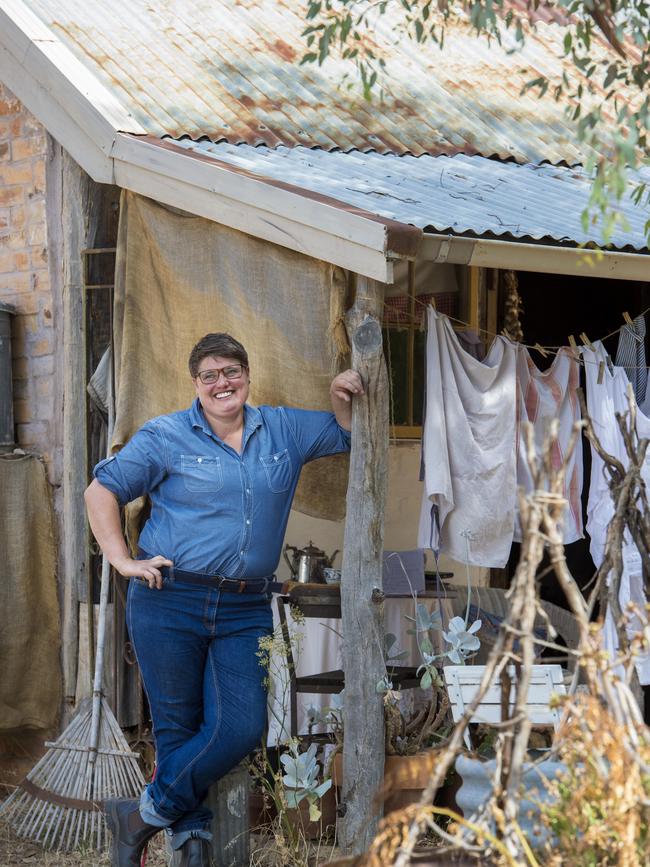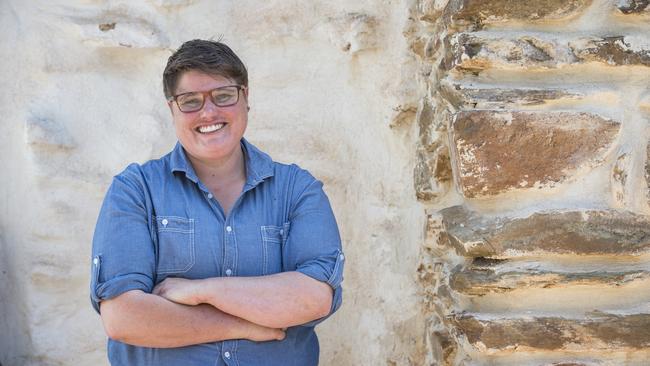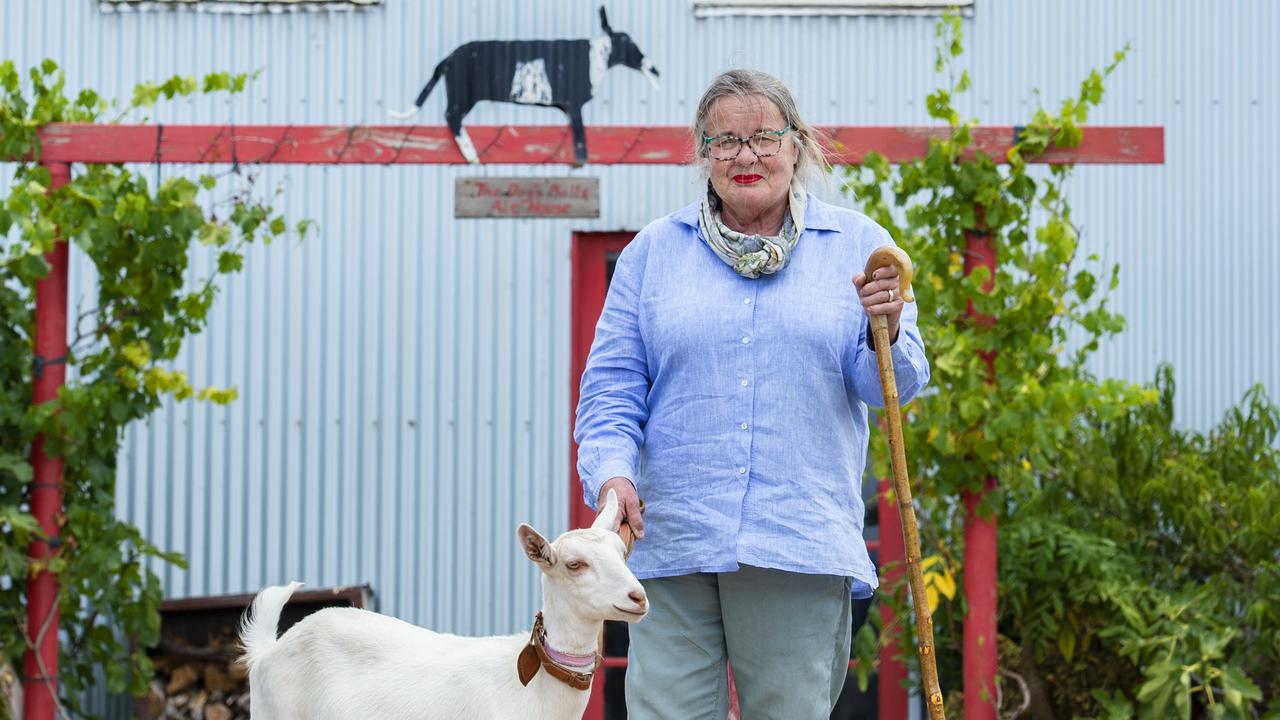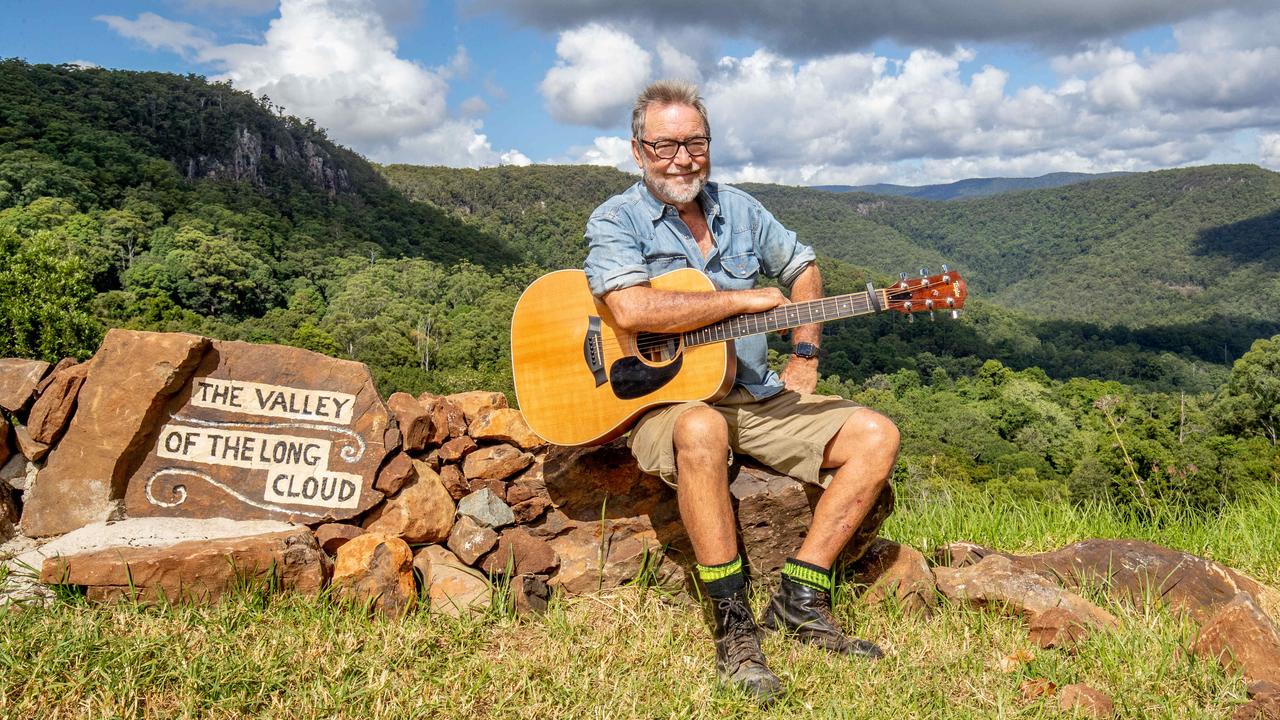Renovation course: Kate Jukes gives gold rush cottages a makeover
A slice of gold rush history has been saved, thanks to a very special renovation. Meet the woman behind the restoration.
VOGUE Living it certainly wasn’t.
Most people would have seen the two miner’s cottages (circa 1850s) in central Victoria as a pull-down job.
“When my brother saw them he commented, ‘Nothing that a good bulldozer wouldn’t fix’,” admits Kate Jukes.
“They were not total ruins. There was a roof on them, they were intact, but even we wondered every day how they were still standing.”
MORE
OLD FRIENDS PINT DREAM FOR COLBO PUB
Even though Kate had never planned on buying the cottages in Clydesdale, near Daylesford, and only spied them online, she fell in love with the property and with her mum, Ann, set about restoring them over the past five years.
The restoration was not only filmed for the ABC TV show Restoration Australia — to be shown in upcoming months — it also resulted in Kate finessing her olde worlde trade skills, completing several courses at Tasmania’s Heritage Education & Skills Centre, Australia’s only dedicated institute.

“The centre was a turning point for me. I felt like I found my people there,” the 37-year-old says.
“The shingle course alone was incredible. Just being able to go out into the bush and make a roof from zero, not even using machines.”
The centre is based in a restored building in the historic town of Oatlands, an initiative of the Southern Midlands Council. About 20 heritage trade trainers oversee up to 12 courses a year, which run from a day through to a week, for tradies seeking to upskill and homeowners wanting to renovate.
The centre’s executive director and founder, Dr Martin Farley, says the courses focus on the interpretation, repair, conservation, restoration and maintenance of heritage properties.
Some of the most popular courses include interior finishes, heritage regulations and practical courses such as shingling or wallpapers.
“We’ve got to be careful we don’t lose old skills and before the centre opened (a decade ago) we were at risk of doing so,” Martin says.
“More people are now more aware of doing the right thing by historic buildings, whether that is restoring them with contemporary comfort and usability, through to pure preservation, keeping it as it was.”
Kate definitely falls in the “pure preservation category”.
“My mum and I are the purists’ purist. The integrity of a building is so important,” she says.
“Old buildings are getting destroyed and McMansions put in their place, or they’re being fixed to within an inch of their lives so they look like a new build. We don’t have much history in Victoria and that’s why it needs to be preserved.
“Some people saw a termite-eaten ruin, but Mum and I saw the vision.”
As such, the two miner’s cottages, which are tiny, 8m x 4m, don’t even have power and certainly no toilet.

Ann and Kate — with the “moral” support of her wife, Gabrielle — compromised and built a new, one-bedroom house near the cottages to provide for modern conveniences.
Kate, who is in alternative country rock band Kate Jukes and the Blue Healers, renovated the buildings herself. That included the clay walls, lime wash and render, repointing, rebuilding a timber floor (“one of the cottages has a brick floor that is undulating so we left that”), added a calico ceiling and repaired the roof (opting for tin in the bushfire-prone area).
She was equally a purist about materials, always opting for recycled and old.
“I sourced wattle poles for the veranda and used old glass for the windows because it has a wave in it,” Kate says.
As for machines, she was a little more pragmatic.
“I started hand mixing the clay and mortar, but then decided to get a cement mixer because it was really hard work. I was working full time in my day job during the week and on weekends was working 15 hours a day to renovate the cottages,” she says.
Kate did not start from a zero base in heritage construction.
She says her love of old buildings started when she grew up in the two-century old Sage’s Cottage on the Mornington Peninsula. After she finished school she worked as a labourer for her father, a stonemason.
“I always loved building, but it was difficult as a female to get a foot in the door. There were a lot of barriers,” Kate says.
She completed a four-year apprenticeship in carpentry and later specialised in heritage projects for a building company, before starting her own business specialising in old trades, now called Bespoke Heritage Building.
Having finished the renovations last year, the cottages will be used as accommodation, while Kate will focus her skills on renovating other people’s heritage projects, all except for electrics and plumbing.
She’d like her next “personal folly” to be the construction of a traditional 3m x 3m wattle and daub cottage.
“Being in the cottages is magic. It transports you back. You can almost imagine yourself spinning wool in there,” Kate says.
“When my mum stays in her cottage she loves cooking over the coals of the fire place.
“For me, I just love sitting on the front veranda, listening to the birds.”
● centreforheritage.com.au


